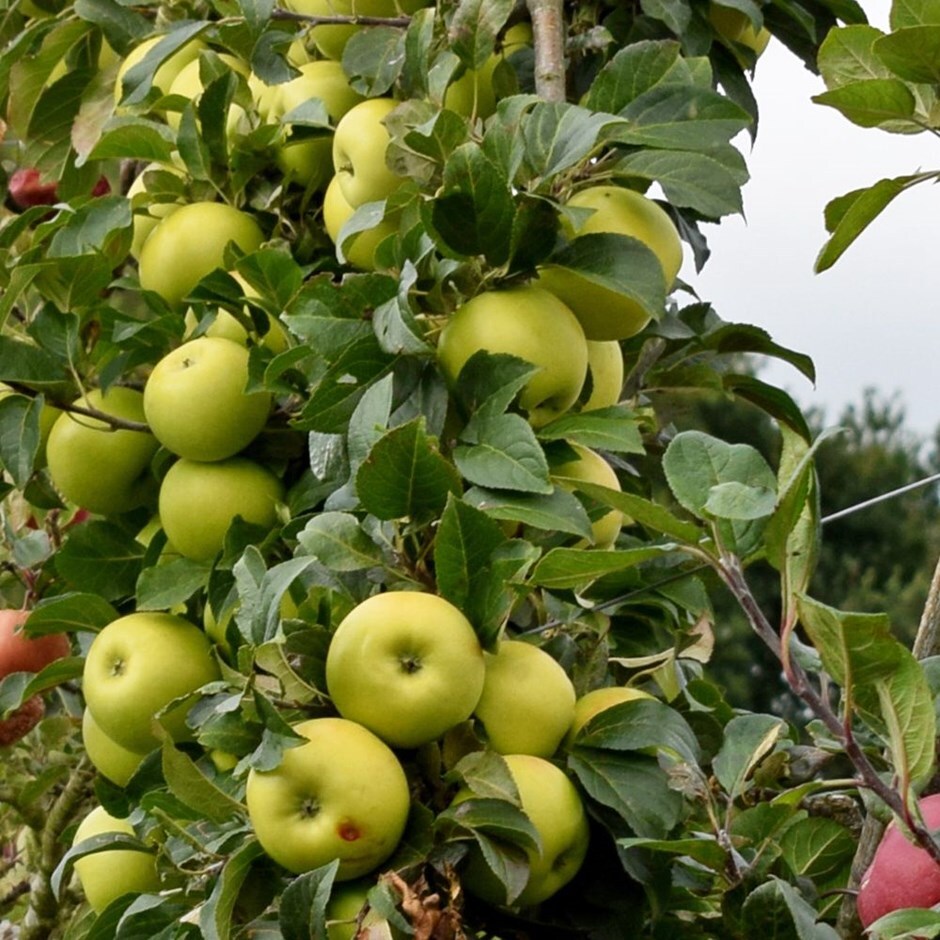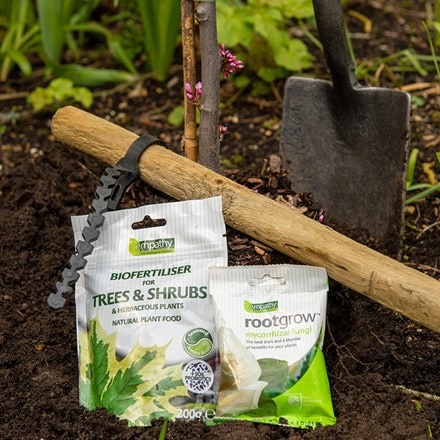apple 'Limelight'
eating / dessert apple
- bare root | MM106 root stock | 1.2m tall
- £44.99
- Delivered by mid-December
Delivery options
- Standard £12.99
- Position: full sun
- Soil: moderately fertile, moist but well-drained soil
- Rate of growth: average
- Flowering period: April to May
- Hardiness: fully hardy
A reliable mid-season cultivar with excellent cropping potential, this dessert apple stands out for its luminous yellow-green skin and crisp texture. The fruits have a refreshing, tangy flavour and juicy flesh, making them a great choice for eating straight from the tree.
Apple ‘Limelight’ typically ripens from mid to late September and stores well for several weeks if kept cool, and shows good resistance to common diseases. Compact in size, it’s well-suited to smaller gardens or trained forms like cordons and espaliers. Popular with gardeners for both taste and reliability, it’s a strong contender for homegrown apple production.
Pollination information: This apple belongs to pollination group 3, so you will need to plant one other different variety of apple to guarantee cross-pollination, and a subsequent bumper crop. Ideally this should come from the same pollination group, however it is possible to use one from group 2 or 4 as well.
Apple ‘Limelight’ typically ripens from mid to late September and stores well for several weeks if kept cool, and shows good resistance to common diseases. Compact in size, it’s well-suited to smaller gardens or trained forms like cordons and espaliers. Popular with gardeners for both taste and reliability, it’s a strong contender for homegrown apple production.
When planting your apple tree, prepare a hole up to three times the diameter of its root system. Fork over the base of the pit in readiness, incorporating plenty of organic matter into the backfill and planting hole. Place the plant in the planting hole and carefully refill, firming the soil around the roots to eliminate air pockets. Insert stake at this point if required.
Avoiding frozen and waterlogged soil, trees should be planted out as they arrive. If you've ordered a bare root tree, soak the roots in a bucket of water for half an hour prior to planting - or if this is not possible, they can be heeled in temporarily, covering their roots with soil, or potted up.
Keep the base of the tree weed free, fertilise at the beginning of each year water regularly during hot, dry spells.
The main prune should be done in the winter as long as it isn't frosty or freezing. Take out the 3D’s (dead, dying and diseased wood) and create an open shape. Then reduce the leaders back by a third. Aim to create an airy structure without any crisscrossing branches.
In August summer prune. Shorten any side shoots (or laterals) which are longer than 20cm back to three leaves. This will allow the sun to ripen the fruit and encourage more fruit buds. Make sure that the growth you’re cutting away feels firm to the touch.
Avoiding frozen and waterlogged soil, trees should be planted out as they arrive. If you've ordered a bare root tree, soak the roots in a bucket of water for half an hour prior to planting - or if this is not possible, they can be heeled in temporarily, covering their roots with soil, or potted up.
Keep the base of the tree weed free, fertilise at the beginning of each year water regularly during hot, dry spells.
The main prune should be done in the winter as long as it isn't frosty or freezing. Take out the 3D’s (dead, dying and diseased wood) and create an open shape. Then reduce the leaders back by a third. Aim to create an airy structure without any crisscrossing branches.
In August summer prune. Shorten any side shoots (or laterals) which are longer than 20cm back to three leaves. This will allow the sun to ripen the fruit and encourage more fruit buds. Make sure that the growth you’re cutting away feels firm to the touch.
Goes well with
Premium tree planting kit with softwood stake
kit with with softwood stake
£20.95
In stock (shipped within 2-3 working days)



